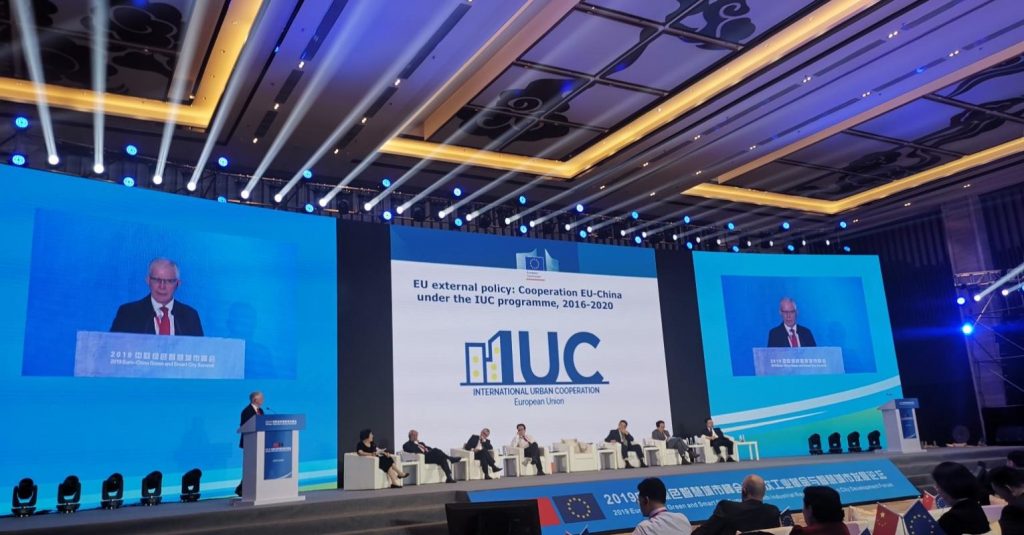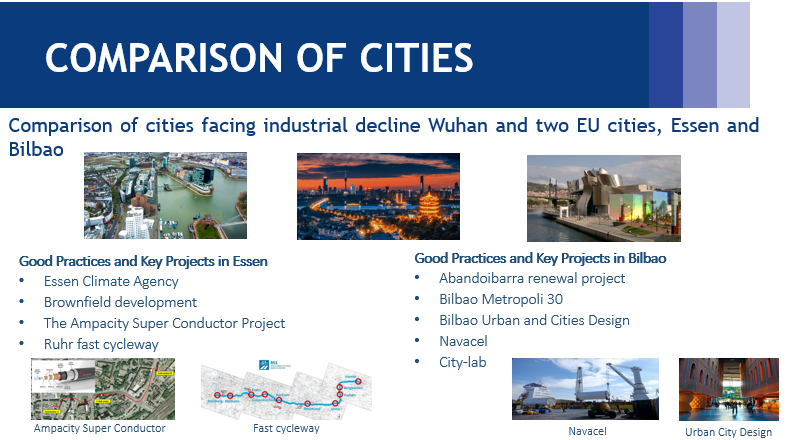The IUC-Asia programme held an online session to present its progress on the ongoing EU-China Low Carbon City Study, along with case studies of several cities like Bilbao. On the call were senior experts from both China and Europe. The study is being jointly drafted by the IUC-Asia project and experts of China’s National Center for Climate Change Strategy and International Cooperation (NCSC). The online session was a stepping stone to the onsite conference foreseen for September 2020 in China (TBC).

Funded by the European Union, the International Urban Cooperation (IUC) programme activities support the achievement of bilateral policy objectives, as well as major international agreements on urban development and climate change, such as the Urban Agenda, the Sustainable Development Goals, and the Paris Agreement.
During the call, the authors of the study and senior experts from the Chinese and European cities and provinces discussed the study. They explained: the main GHG emissions sources; ongoing programmes at national, provincial and local level to mitigate the emissions; achievements, challenges and future goals. The discussion also dealt with the implications of the European Union’s Green Deal for the transition towards low carbon in European cities as well as with the possible implications of China’s 14th Five Year Plan for Chinese local authorities.
Case studies were presented by the European cities of Bilbao and Essen (Germany), and Chinese cities of Wuhan, Ningbo and Jiangsu Province. Experts explained challenges and achievements in the last decades of the cities’ transformation towards low-carbon. In general, they said that it’s the cities the ones who go ahead of the national governments, both in China and Europe.

Xabier Arruza on behalf of Bilbao Urban & Cities Design explained the fascinating transformation process of Bilbao during the past decades and how can this enriching experience gained during that award-winning process may serve to inspire new urban solutions. He shared examples related to mobility, environmental and urban regeneration, and innovative public management. Xabier also explained the transformation of Abandoibarra, from an obsolete and run-down port area to an attractive promenade with cultural highlights (Guggenheim Museum), new green areas, hotels, shopping centres and residential apartments.
The role of businesses was emphasised in the case of Bilbao, in which Nuria Celorio from Navacel introduced the company’s business transformaton in the last decades from carbon (the 1950s) through oil and gas (the 1980s) and now to wind and renewable energy.
Xabier Arruza shared also his view on the success factors towards low-carbon, including a long-term vision strategic plan based on a broad consensus of public-private partnerships. Adding that it’s crucial to have an innovative urban and economic regeneration and open governance model, as well as substantial and continued investment.
Bilbao Urban & Cities Design formed by some of the best Urban Strategy Thinkers who came across during the Bilbao Metropolitan Urban Transformation process, has among its objectives the following related to international business:
- Attraction of international urban projects to be developed by members of the Association.
- Establishment of transnational agreements with public and private entities.
- Promotion of our companies and professionals worldwide.
If you are interested in this kind of projects, do not hesitate in joining us.

Recent Comments